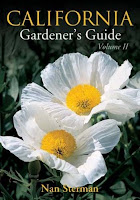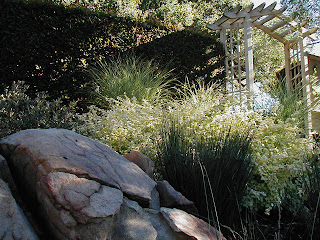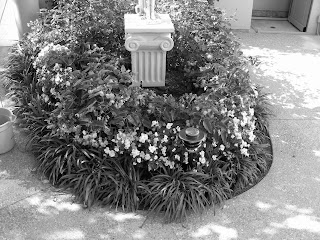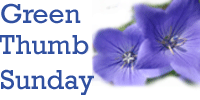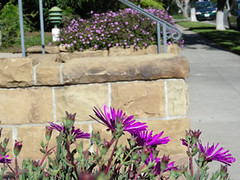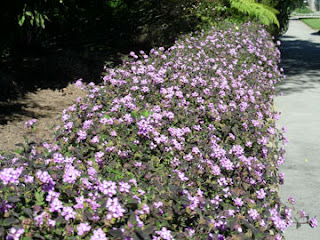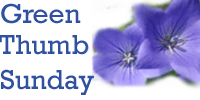
I read this today in the L.A. Times, and, pardon the pun, but it's a delicious piece of writing. I'm posting it verbatim. Thanks to Karin Klein who wrote the piece, and to the L.A. Times for printing it...
___________________________________
Remarkably, a plant survives on an inhospitable patch of Interstate 5.
February 5, 2008
The morning commute north on Interstate 5, through the landscape of billboards and warehouses, is generally slow enough for me to take in more scenery than I'd like. The kitschy giant giraffe statue at the sculpture store. The overhead freeway sign that informs me it will take 50 minutes to cover the next 12 miles. Lately, though, I've been entranced by the tomato plant.
You have to drive in the so-called fast lane toward downtown to see it, and at first I doubted my eyes. It's a straggly thing sprouting from the asphalt along the median barrier, within easy sight of the Commerce Casino. The spot is so inhospitable, even the weeds are stunted. Every week, nevertheless, the plant's once-green berries grew visibly larger and redder. There it sprawls, its species now unquestionable, at the wrong time of the year, with full eastern exposure, bearing a prolific load of red fruit.
Its abundance is all the more amazing to me because my own tomato crop last summer was such a bust. I gave my baby plants as much southern sun as my suburban garden could muster. I tenderly spooned organic fertilizer around their stems. All I got for this was a collection of lackluster sandwich toppings.
Most likely, this plant is itself the offspring of a drive-through hamburger, the leftovers carelessly tossed out a driver-side window. A sort of circle of tomato life. In any case, catching a glimpse of it always brings on an irrational rush of delight. It's such a hardy, colorful individual, thriving in gray surroundings as the cars grind by, neglected but for the winter rains.
Psychologists understand why children who grow up in impoverished, danger-filled urban environments are at greater risk of failing in school and getting into trouble. What they can't fully figure out is how some children emerge from the most hostile, neglectful backgrounds as happy, well-adjusted adults. The experts are rightly impressed by these inherently sturdy souls and think we all have something to learn from them.
At last sighting, the tomato plant had crept practically into the traffic lane. Yet no one had picked the crop, and there are times on that virtual parking lot called the Santa Ana Freeway when it would be easy. No one had run over it out of indifference, by accident or just for the fun of seeing the fruit squashed. It's encouraging to imagine that even we cynical, road-weary commuters still have the capacity for awe for such a feat of survival, and can't bring ourselves to harm the tough little character.
Karin Klein

